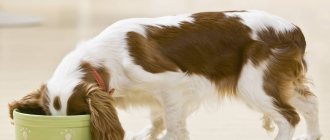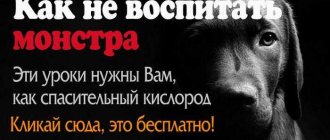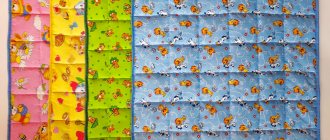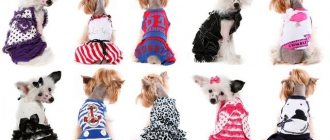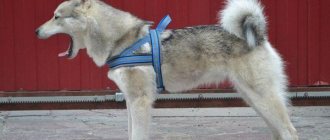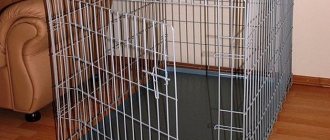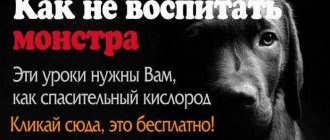Sled dog racing is still considered a popular sport throughout the world. But few people know why there was a need to use sled dogs even before the advent of competitions. This article describes in detail what a dog sled is called, where dog racing originated and what rules exist for this.
Sled race
Dog sled - history
The idea of sled dog racing originated in North America. In the late 19th century, gold rushes hit the states of Alaska and Yukon, and prospectors needed to quickly transport provisions to distant places. The delivery was carried out by mushers (mushers) and dogs. The animals were harnessed to special sledges, but not all breeds could withstand such a heavy load.
Another impetus was the diphtheria epidemic in 1925 in the city of Nome (Alaska). They began to deliver the vaccine to the city with the help of dogs - it was a fairly fast form of transport. The first two professional racers to start riding dogs were Leonard Seppala and Gunnar Kaasen. Seppala left the city with a team of Chukchi dogs, the leader of which was Togo. On the way back, they were replaced by Kaasen with the leader of the team, Balto, who turned out to be the fastest of all the dogs.
Since then, dog sledding has been a world-famous sport. In the 20th century, competitions were even part of the Olympic Games.
Additional Information. Now races are held not only in North America, but also in Europe (Italy, Switzerland, Austria), and in the north of Russia.
Using dogs for transportation
Horse VS dog sled
Contents hide
Horse VS dog sled
Today I bought ammunition for our horses. And here’s an idea that interested me: how the cost of equipment for one horse and for one team of dogs compares in cost (we take an average of 6 animals). And I started counting...
A normal bridle for a horse costs about the same as harnesses for all dogs, and an average saddle costs the same as a good sled. Of course, there is also a line for harnesses and saddle pads and fur traps for a horse, but in general, in order to equip a dog team and one horse, you will have to pay almost the same amount of money (and quite a lot).
Overall, I liked the topic and began to develop it further. I finished thinking about it in the evening, discussing it with Lesha.
A horse is worth more than 6 dogs. Again, we take average prices. It is clear that there are cool husky athletes for whom people are willing to pay a tidy sum, while some village horse will cost less. But horses also cost several million (and not just rubles), and dogs are quite affordable for an ordinary person who suddenly decides to engage in sledding. And huskies are often given “in good hands”, which, unfortunately, is not often found in the equestrian world, since a horse that has become unnecessary (old, aggressive, uncontrollable) can always be sold for meat, earning at least some money for it... But this that's another story.
So, we sorted out the price of ammunition and the animal itself. As for content, there are even more factors influencing cash costs. A horse cannot be kept in an apartment. It’s also unlikely that you will have six huskies living there, but again with dogs it’s still a little easier in this regard. And for a horse, if you don’t have a private home or if you don’t plan to keep it on your plot, you need to specifically look for a place to stay, for which you’ll have to pay (and here, too, the prices are “from” to infinity: you can stay with a solarium and a swimming pool find for your horse). In Svyatopol, the maintenance of one horse and 6 dogs turns out to be approximately the same.
Now comes the fun part – working with animals. It is initially more difficult to ride a horse. The dog is determined to work with a person. Horses are just horses, not specially trained, “our own” ones - this is not particularly necessary. It’s good for her to graze, walk and communicate with her relatives even without you. Horses do not have such an innate love for humans as huskies do. The dog will be happy to “put on” the harness and run. She may not yet understand what is required of her, but she likes the process itself. And to even accustom a horse to a saddle will require a lot of time and patience. And knowledge. You can, of course, use “wild” methods - tie up the horse, put on the saddle, jump up and hold on while the animal jumps and gallops under you - but this is a lot of stress for the horse and is generally inhumane. And it’s more dangerous to run over a horse (be it humanely or not). And again, I’ll make a reservation that I’m comparing this position “all other things being equal.” If you are planning to prepare a dog sled for an international race, and you just need a horse (calm, kind in character) to ride in a shift behind someone, then these are generally different levels. Just like regular dog rides and equestrian competitions at the Olympic Games.
As for harnessing. If one person does this without assistants, then saddling the horse “from” to “to” is faster and easier. Unless, of course, we are talking about dogs that themselves fall into place in the harness and patiently wait for you to fasten them, without rushing anywhere, after they find themselves in the harnesses.
Well, as for covering the distance... In terms of speed, the horse is, of course, faster. However, she will not gallop for long. Over long distances, horses move mainly at a walk, while dogs in a harness trot (jog). On average, both horses and dogs cover the same number of kilometers per day, if necessary. But here again there are many factors. Dogs are primarily used for snow travel, while horses are used for year-round transportation. However, the team can take you where there is no food (for example, to the North Pole), dragging the food on itself. But you won’t take a ton of hay with you. But on hikes where there is grass (or at least it can be obtained from under the snow), additional food for the horse is not needed at all.
And another horse will never fight with itself, but sometimes dogs are not averse to letting their souls out in a good brawl. Although loneliness has a detrimental effect on the horse, causing mental problems, bad habits and various problems in education.
Well, both the horse and the team of dogs definitely need the same amount of attention, love and care - a lot! And the time you will devote to them. But both animals will repay you handsomely.
Race disciplines and classes
Competitions are divided into disciplines, classes and categories. There are winter and summer disciplines.
Winter:
- sleds;
- skipulling – 1-4 dogs harnessed to a small sleigh;
- skijoring - ski races using 1-2 dogs.
Summer (dryland):
- canicross - running between a person and a dog;
- scooter/scooter – the use of these types of transport by a person with a dog tied and running in front;
- dog-karting – an animal pulls a cart with a person or cargo;
- Bikejoring is the riding of a person on a bicycle with a dog tied and running in front.
The race class is determined by the number of dogs participating:
- not limited – any number of dogs;
- limited – a certain number of animals;
- sprint – a short distance race with 4, 6 or 8 dogs;
- for juniors – participants (people) must be no more than 18 years old;
- remote – medium distance – up to 500 km, long distance – from 500 km;
- with weights - transportation of cargo in a sleigh;
- relay race - several teams participate in it;
- orienteering - a race in unfamiliar territory using a map or compass;
- foot race - a person is attached to a dog and runs after it on foot;
- multi-day race - participants cover certain distances over several days.
There are only 4 speed categories:
- the first – teams of dogs of northern breeds with pedigrees;
- the second – dogs of northern breeds with pedigrees (without huskies);
- third – any breeds with pedigrees;
- the fourth is a team in which there is at least 1 dog without pedigree or mixed breed.
Summer racing
Competition rules
Professional dog riding has its own rules and requirements:
- the air temperature must be acceptable for running;
- the length of the route must correspond to the competition class and be at least 25 km;
- a rider is allowed to participate in all types of racing only from the age of 16; from 12 years old, you can only participate in the sprint with 2 dogs;
- the age of the animals must not be less than 15 months for sprint, canicross and 18 months for other racing classes;
- pets must be healthy, microchipped or branded and have veterinary documents - the condition of the animals is checked before the competition;
- Pregnant, estrus or lactating dogs are not allowed to participate in the race;
- equipment is inspected before the race.
Note! Dogs without a pedigree cannot receive a working title after competitions.
Equipment
To participate in competitions, only equipment that is comfortable and suitable for the animal is allowed. Collars, harnesses and cables should be made of lightweight but durable materials. The harness ensures uniform distribution of the load on the dog's spine during sudden jerks and running. It should be the right size for the dog.
The tug (as a cable with a shock absorber is usually called) connects the dog’s harness with the rider, protects the dog’s spine during sudden movements and heavy loads. To use it, the size of the pet and its physical fitness are also taken into account.
Required equipment
Harnesses and leashes for dogs
- Collar
- DaiviBel
- Ferplast
- ForDogTrainers
- Hunter
- Julius-K9
- Tappi
- Triol
- Trixie
- VIPet
- ZooMaster
- Arkon
- Zoonic
- show all
- Hide
Filter
Show by: 10 30 50
244 products Sort by:
- New
Dog harness Hunter Smart Modern Art R&S Luxus 40/11 leatherette with rhinestones blue 27/32 - 38 cm(0) Quick view
Weight Price Buy 1 PC 1389 Buy
- New
Dog harness Hunter Smart Ecco Quick L nylon red 25 mm 52 – 74/55 – 79 cm
(0) Quick view
Weight Price Buy 1 PC 895 Buy
- New
Harness for medium breed dogs Ferplast Ergoflex PM violet
(0) Quick view
Weight Price Buy 1 PC 1562 Buy
- New
Harness for small breed dogs Ferplast Ergoflex PS gray
(0) Quick view
Weight Price Buy 1 PC 1430 Buy
- New
Harness for small breed dogs Ferplast Ergoflex P XS gray
(0) Quick view
Weight Price Buy 1 PC 1302 Buy
- New
Harness for small breed dogs Ferplast Ergoflex P XS violet
(0) Quick view
Weight Price Buy 1 PC 1302 Buy
- New
Harness for medium breed dogs Ferplast Ergoflex PM gray
(0) Quick view
Weight Price Buy 1 PC 1562 Buy
- New
Harness for large breed dogs Ferplast Ergoflex PL gray
(0) Quick view
Weight Price Buy 1 PC 2143 Buy
- New
Three-layer harness for dogs Tappi Orion No. 10 gray 76 - 93 cm
(0) Quick view
Weight Price Buy 1 PC 1008 Buy
- New
Three-layer harness for dogs Tappi Orion No. 6 gray 53 - 60 cm
(0) Quick view
Weight Price Buy 1 PC 637 Buy
- New
Three-layer harness for dogs Tappi Orion No. 5 gray 47 - 55 cm
(0) Quick view
Weight Price Buy 1 PC 620 Buy
- New
Three-layer harness for dogs Tappi Orion No. 4 gray 41 - 47 cm
(0) Quick view
Weight Price Buy 1 PC 515 Buy
- New
Three-layer harness for dogs Tappi Orion No. 2 gray 31 - 39 cm
(0) Quick view
Weight Price Buy 1 PC 484 Buy
- New
Three-layer harness for dogs Tappi Orion No. 6 red 53 - 60 cm
(0) Quick view
Weight Price Buy 1 PC 637 Buy
- New
Three-layer harness for dogs Tappi Orion No. 5 red 47 - 55 cm
(0) Quick view
Weight Price Buy 1 PC 620 Buy
- New
Three-layer harness for dogs Tappi Orion No. 4 red 41 - 47 cm
(0) Quick view
Weight Price Buy 1 PC 515 Buy
- New
Three-layer harness for dogs Tappi Orion No. 2 red 31 - 39 cm
(0) Quick view
Weight Price Buy 1 PC 484 Buy
- New
Three-layer harness for dogs Tappi Orion No. 1 red 28 - 35 cm
(0) Quick view
Weight Price Buy 1 PC 469 Buy
- Hip support harness for dogs Julius-K9 XL neoprene black 89 – 108 cm
(0) Quick view
Weight Price Buy 1 PC 4787 Buy
- Hip support harness for dogs Julius-K9 S neoprene black 51 – 60 cm
(0) Quick view
Weight Price Buy 1 PC 4679 Buy
- Dog harness Julius-K9 IDC Powerharness Mini-Mini black 4 – 7 kg 40 – 53 cm
(0) Quick view
Weight Price Buy 1 PC 2890 Buy
- Dog harness Julius-K9 IDC Powerharness Mini-Mini blue 4 - 7 kg 40 - 53 cm
(0) Quick view
Weight Price Buy 1 PC 2890 Buy
- Dog harness Julius-K9 IDC Powerharness Mini-Mini red 4 - 7 kg 40 - 53 cm
(0) Quick view
Weight Price Buy 1 PC 2890 Buy
- Dog harness Julius-K9 IDC Powerharness Mini-Mini camouflage 4 - 7 kg 40 - 53 cm
(0) Quick view
Weight Price Buy 1 PC 2890 Buy
- Dog harness Julius-K9 IDC Powerharness Mini-Mini green neon 4 - 7 kg 40 - 53 cm
(0) Quick view
Weight Price Buy 1 PC 2890 Buy
- Dog harness Julius-K9 IDC Powerharness Mini-Mini jeans green neon 4 - 7 kg 40 - 53 cm
(0) Quick view
Weight Price Buy 1 PC 2890 Buy
- Dog harness Julius-K9 IDC Powerharness Mini black 7 – 15 kg 49 – 67 cm
(0) Quick view
Weight Price Buy 1 PC 3077 Buy
- Dog harness Julius-K9 IDC Powerharness Mini dark pink 7 – 15 kg 49 – 67 cm
(0) Quick view
Weight Price Buy 1 PC 3077 Buy
- Dog harness Julius-K9 IDC Powerharness Mini blue 7 – 15 kg 49 – 67 cm
(0) Quick view
Weight Price Buy 1 PC 3077 Buy
- Dog harness Julius-K9 IDC Powerharness Mini red 7 – 15 kg 49 – 67 cm
(0) Quick view
Weight Price Buy 1 PC 3077 Buy
Show by: 10 30 50
Sort by: price name
1...Next.
Where to start training
The preparation of dogs for racing begins at about 6 months, when their skeleton is strong and formed. How long does the training last? Sled dogs acquire all the necessary skills by the age of one year, while other breeds require a little more time. You should not prepare decorative, small or show dogs for competitions.
Note! Harnesses are not recommended for pets under 6 months of age, as they have a detrimental effect on the developing skeleton. As the animal ages, the harness should also change.
At first, the dogs are trained individually. Dogs must initially be hardy and obedient. Before training for racing, animals should undergo a training course in special schools.
Method 1 of 4: Equipment
You need to carefully select dog harnesses. You will need a harness, a cable with a shock absorber, and a skijoring belt. In winter you will need sleds to ride in the snow (sled), and in summer you will need a kart (cart) or, for example, a bicycle. The mileage and time counter will also come in handy.
Method 2 of 4: Weight
First, the pet should get used to the harness, and only then you can attach a small weight to the leash. At first it will bother the dog, but then he will get used to moving it. The load should become heavier - you need to act gradually.
On a note! The maximum load that one dog can carry is 50 kg.
Method 3 of 4: Alternative Method
You can hook one leash to the harness and the other to the collar. Leashes must be the same length. When walking your dog, the leash should always be taut and in a horizontal position. With the help of a collar, you need to remind the animal that it must go ahead.
Method 4 of 4: Harness your dog to a sled or scooter
Harnessed dogs may not immediately get used to such a load. You need to give them something to chase. You need to keep them on the same line and not let them run out. The trainer or owner must always keep his foot on the brake. You can create obstacles - sculpt, for example, snowmen.
Important! During the summer, you should not forget to water your dogs often to avoid dehydration.
Sled dog breed – Malamute
Dog sled (3 photos)
Author: Arkady Chugunov
December 21, 2021 10:37
Tags: Ushakov interesting polar explorers travel North Pole dogs cold expeditions
280
3
From a pack of dogs received from the Far East, we gave up one team for the polar station on Franz Josef Land, and forty-three dogs were brought here to the Sedov Islands. Here we began to get to know our four-legged helpers closely and establish relationships with them. Separate teams were allocated, and each of them received an owner. The first requirement for dogs was absolute obedience and respect for their owner.
0
For this they received meat and sometimes affection from him. The owner's affection, apart from feeding, is the only reward for a sled dog for its incredibly hard work and numerous hardships. And the dog loves affection, is drawn to it and is even jealous of the owner of his companions. Many of the dogs, if the opportunity arises, try to intercept the affection, get it first and, if necessary, even fight for the sake of it. For example, here are two beautiful dogs from my team - Varnak and Polyus. The first is white, with large black spots, with a powerfully developed chest and slender, strong legs. He is apparently the strongest dog in the entire pack. The second is white, like fallen snow, built like a swan, with thick, low hair, always alert, lively and agile. Both of them quickly recognized me as the owner, from the very first days they showed themselves to be good workers, and both equally energetically sought affection. They didn’t even pay attention to Zhuravlev, although the latter often fed them in my absence and even more often “schooled” them when fights broke out. As soon as I showed up in the morning, each of the dogs rushed towards me as fast as they could. The first one to arrive almost knocked me off my feet; he stood on his hind legs, put his front legs on my shoulders and tried to lick my face. When this was successful, the dog was incredibly happy and showed his delight in wild jumps. Often along the way, Varnak and Polyus collided like flying balls, and a fight immediately began. Then I hastened to separate the jealous people. Both had to be caressed at once. In this case, they quickly calmed down and lay down peacefully next to each other. As soon as you gave preference to one, the second’s fur, as if from an electric spark, stood up, the trembling upper lip rose, the fangs were bared and a menacing growl was heard. Be too late to pat him affectionately, and he will rush at his opponent like a whirlwind. If the dogs were sitting on a chain, you had to go around them all - scratch one behind the ear, stroke another, pat the scruff of the third - and say a few words to each. Until this ceremony was over, there was nothing to expect and peace. Those who did not receive their share of attention from the owner barked, squealed, tore at their chains and snapped at their neighbors. True, at first there was little affection, more punishments. The habits of the dogs, the character of each of them, their ability to work and the degree of training were unknown to us. There were no trained leaders among our dogs who could lead the team and pull it in the right direction at the command of a person. We had to identify the strongest, most intelligent ones and start training them. But the root of the teaching is always bitter. At first I used the East Siberian method of harnessing. The dogs, who had gotten used to it before, pulled the sleigh together, but they took them where they wanted, not me. Only sometimes, and then by chance, our desires coincided, and the sleigh was directed in the direction I wanted.
0
Not a single dog understood the command. I tried everyone, but to no avail. After much rearrangement, endless shouting and whipping, I finally settled on Mishka. He seemed to be the most suitable. By the way, it must be said that Mishka was, if not the best dog in our entire pack, then the most popular. He gained his fame at Sedov. Once while swimming, in damp weather, which dogs hate, they were released from completely wet enclosures. The bear ran around the entire ship. He even tried to go into the engine room, but was kicked out by the mechanics. He carefully sniffed all the nooks and crannies, but did not linger anywhere for long. Only the delicious smells that hit his nose from the galley doors made Mishka freeze in place. In all his dog life spent near hunting tents, Mishka must have never met such pleasant doors. Putting on his most well-behaved face, slightly tilting his head to one side, he sat opposite the galley, as if enchanted, and reveled in the aromas. His eyes dimmed. Sometimes he closed them completely and probably thought he was having a sweet dream. Thin streams of saliva flowed from the corners of his mouth. Mishka was so immersed in his experiences that he did not even notice a group of people silently watching him. Luckily for Mishkino, the cook was in a good mood. Seeing the dog, he spoke: “Well, dog? How are you?" The bear, as if under hypnosis, moved closer. His eyes flashed and his tail beat across the iron deck. The dog raised his muzzle and howled. Not a sharp wolf howl that causes hostility in a person, but on some warm notes full of delight. The cook was even confused at first. Then his face lit up with pleasure. “Eh! What, can you sing? Oh well! Well, be brave!” And the dog spoke again. She had already half-squeezed into the galley, and the touched cook and his assistants bent over her. Another tremolo..., and the fatty piece of beef disappeared from the table. From that day on, Mishka became the favorite of the galley, entertaining its inhabitants and receiving tasty pieces and bones as a reward. He became so comfortable with his role that when he saw the galley closed, he stood on his hind legs, scratched the iron doors with his front legs and howled until the treasured door opened slightly and a hand with a piece of meat stuck out of it. This is how Mishka stood out among other dogs and gained popularity among the crew. All that could be heard on the ship was: “Bear! Misha! Mishunya! Only Zhuravlev did not share the team’s enthusiasm. The hunter believed that every dog should be kept, as he put it, “in the fear of God” and respect its master - man. He contemptuously called the dog not Mishka, but a sycophant. However, the sympathy for the dog of all the inhabitants of the ship was so great, and the cook advertised it so much, Um, that Zhuravlev’s contemptuous nickname was not successful, and Mishka remained Mishka - everyone’s darling. For the team, I needed two front-line workers. I especially wanted to make Varnak and Polyus the leaders. They were the strongest, and they looked very impressive - literally handsome! But alas! Varnak could not understand what I wanted from him. He looked into my eyes with true dog trust, cowered from screaming, or rushed in a completely unnecessary direction. I couldn’t hit him - he pulled honestly. He stood out with his strength and put all of it into his work. But he could not be a leader. The pole turned out to be more capable. He soon began to understand my demands, but Varnak, rushing about nearby, disturbed him. Finally, I placed Mishka next to the Pole. After an hour, the newcomer already understood what needed to be done with this or that command, and the teaching began to improve. True, sometimes Mishka began to be capricious and tried to appear completely deaf. Then the whip came to the rescue and instantly restored Mishka’s hearing and understanding. Mishka worked coolly, did not climb out of the strap, pulled the line carefully, as if he was afraid of tearing it. But for now I needed something else from him - an understanding of the team, which he soon learned. So Mishka and Polyus became my leaders. After several days of training, the whip fell only on the quitters, my swearing and the squealing of the dogs were heard less frequently. I was already sure that I could go in any direction and lead teams of comrades.
0
But sometimes I had to use the whip outside of school hours - this is when it was necessary to interrupt my favorite dog sport - a fight. They fight desperately, with passion. There are an infinite number of reasons for a fight: an undivided piece, jealousy of the owner, a careless movement of a neighbor, a occupied place, a tangled chain, and simply an excess of strength and energy. We would not object to this entertainment of our assistants if they did not have the habit, apparently inherited from their ancestors of wolves, of attacking one with the whole pack. As a rule, two people start the fight. But as soon as one of them is knocked to the ground, the whole flock falls on him. Then only the energetic work of the whip can save the unfortunate person from death. After such a dump, several dogs always ended up with bloody ears, while others jumped on three legs for several days. There are real bullies, hooligans and provocateurs among dogs. Here is a gray dog with sparkling, intelligent eyes, with dense wolf fur, differing from a wolf only in his obedience to man and his perky tail curled up. His name is Bandit. The name is offensive even for a dog. But it didn’t stick to the dog by accident. This dog gave us a lot of trouble. She did not tolerate peace in dog company and was truly pleased if she managed to start a fight. It was done like this: the dogs, tired from the working day, unharnessed and were given an hour and a half of complete freedom before feeding. At this time of rest, they did not want to take their usual sleeping position - they did not curl up in a ball, gathering all four paws together, pressing their nose to them and covering them with their tail. As a rule, at this hour they all lay on their sides, stretched their paws to the sides, as if trying to relax the muscles of their body for complete rest. The bandit worked no worse than others, but was less tired. He was strong and extremely healthy. Twenty to thirty minutes after unharnessing, he already forgot about fatigue. He stood up, stretched and seemed to say: “Well, enough lying around, it’s time to get down to business.” Having critically examined the flock, he outlined the victim. Approaching and bending his head just above the ear of the calmly lying dog, he bared his dazzling white fangs and began to slowly growl. Gradually the growl moved to higher and higher notes. Threat and challenge bubbled within him. If the dog came across calm or very tired, it did not answer the bully, and he, after standing over it, walked away in disappointment. After a few minutes, the Bandit chose a new victim and started all over again. He just needed an excuse to fight. As soon as any dog snapped, he used his fangs with lightning speed. The fight has started. The whole flock, no matter how tired it is, gets up, and a minute later a general brawl begins. And Bandit? Oh, he was a born hooligan, a provocateur! Having started a squabble, he somehow mysteriously managed to jump out of the dump, ran to the side, sat down and watched with admiration. He sat and seemed to smile. Sometimes it seemed to us that the dog was laughing not only at the dogs, but also at us. The whip often walked along the Bandit’s sides, but could not discourage him from fighting. He worked great in harness. The bandit was by no means evil in character. He demanded affection, like everyone else; When he was in a good mood, he would flirt with his neighbors. We admired his work and thought with sadness about his shameful name. There were cases when, admiring the dog’s diligence, we even decided to give him a different nickname. But as soon as the strap was removed from him and left free, he immediately fully justified his nickname. He ended up in Zhuravlev’s team, but did not change his character, although, as already mentioned, the hunter’s rule was: “the dog must be kept in the fear of God.” *** Eskimos often, instead of a whip, keep on hand a half-meter stick, to the end of which several metal rings are attached. It is enough for the rider to shake this rattle, and the dogs, even very tired ones, will instantly respond to the call, cheer up and run faster. Regardless of the method of harnessing, dogs are very susceptible to the mood of their owner. A song or lively conversation makes them cheerful and speeds up their running. And often the rider sings loudly or talks while sitting on a sleigh, although for tens and sometimes hundreds of kilometers around you will not find a single listener. This is a driver having fun with his dogs. And not without success. The owner is cheerful and cheerful; his dogs are cheerful and cheerful.
Source:
Related links:
- You can't drink photogenicity
- How people imagined the future of travel in the 1900s
- The only corgi policeman in Russia retired
- Travelers were miraculously rescued from the North Pole
- Kim Jong-un has banned North Korean residents from keeping dogs at home
Tags: Ushakov interesting polar explorers travel North Pole dogs cold expeditions
Did you like the post? Support Chips, click:
17 1 16
Liked
16 0
1
Partner news
Terminology
Sled sports use certain terminology. Here are the basic concepts:
- A race is a type of competition in a specified discipline and class.
- Race – a one-time passage of the distance.
- Sled is the name of dogs that are harnessed to a sleigh, scooter, bicycle, etc.
- The competition area is the place where the start, finish, parking, spectator and judge areas, and the track are located.
- Equipment – clothing, equipment and ammunition used during competitions.
- The driver is the person driving the team.
- The handler is the driver’s assistant at certain points of the race.
- Steak-out is a place where pets are kept;
- A musher is a person who drives a team during a race.
DIY dog tracks
If the owner decides to sew a harness for the dog himself, then you need to carefully measure the dog’s chest circumference, neck circumference and chest length (you need to apply a measuring tape from the center of the neck to the center between the front paws). You can use non-rigid leather belts with a width of at least 4 cm. The following measurements should be obtained: chest circumference + 10 cm for fastening, neck circumference + 10 cm and chest length + 12 cm. Carabiners are used to fasten the elements.
Measuring circuit
On a note! The pull can be made from a leather bandage or thick rope. The length of the belt depends on the number of dogs.
Dog sled racing is quite an exciting and spectacular competition. Every rider should not forget about caring for their pets and choosing the right equipment for them. The musher must also have athletic physical abilities to control such strong and fast animals.
A few secrets of sewing a harness
Riding animals are familiar with a collar, but they pull weights with the help of a harness. It is a wide strap that intercepts the dog's chest over the withers, directly behind the front legs. Another strap is attached perpendicularly to it, which intercepts the animal’s chest under the neck.
This is a kind of loop that is put over the head, secured around the body and supported by additional back straps. Its end is located on the side of the animal and is fixed to the pull rod.
The modern niche market offers a large variety of devices of this kind, but not all of them are suitable for riding structures. You can make a harness with your own hands from non-rigid leather belts, the width of which should not be less than 4 cm. Thinner slings will simply cut into the skin of the animal, injuring it.
When making this equipment, you should definitely take into account the size of each specific dog. To take measurements, use a regular measuring tape, which every tailor has in their arsenal. It is imperative to measure the distance from the withers to the tail, the circumference of the chest behind the front legs and the circumference of the neck.
To fasten all the elements together, carabiners are used, which make it easier to put on and remove the harness, which is especially important in conditions of sub-zero temperatures and the use of bulky mittens. The most preferred are modern carabiners made of high quality steel.

